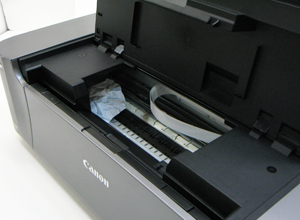The 5 Role of Ink Cartridges in High-Quality Photo Printing: A Comprehensive Guide to Everything you need to know

In the world of photography, where every detail and nuance matters, achieving high-quality prints is an art form. Central to this process are ink cartridges, the unsung heroes behind the vibrant colors and intricate details that bring photographs to life on paper.
Understanding the role of ink cartridges in high-quality photo printing is essential for photographers, enthusiasts, and anyone who values the visual impact of a well-crafted image.
1. Color Reproduction and Ink Cartridge Technology
The cornerstone of high-quality photo printing lies in the ability of ink cartridges to faithfully reproduce colors with precision. The technological advancements in ink cartridge design have been instrumental in achieving the rich and accurate color reproduction that photographers demand.
Modern inkjet cartridges, in particular, use sophisticated color mixing techniques to produce a vast spectrum of hues, ensuring that the subtle shades and tones captured by the camera are faithfully translated onto the print.
Within an ink cartridge, multiple color reservoirs house different ink colors, typically cyan, magenta, yellow, and black (CMYK). These colors are combined in varying proportions to create an extensive range of hues. Some high-end photo printers include additional color cartridges, such as light cyan and light magenta, to enhance the subtleties in the color spectrum.
This meticulous approach to color reproduction allows ink cartridges to capture the essence of a photograph, preserving the artist’s intent and delivering prints that mirror the vibrancy of the original image.
2. Precision in Detail and Ink Droplet Size
The devil, as they say, is in the details, and when it comes to photo printing, the ability to reproduce fine details accurately is a testament to the precision of ink cartridges. The size of ink droplets ejected onto the paper plays a pivotal role in capturing intricate details, especially in high-resolution photographs.
Inkjet printers with smaller droplet sizes can reproduce finer details, resulting in crisper images that showcase the photographer’s skill and the intricacies of the captured scene.
The technology behind inkjet printing involves microscopic nozzles that spray minuscule droplets of ink onto the paper. Printers capable of producing smaller droplet sizes, measured in picoliters, can achieve higher resolutions and finer details.
The ability to vary droplet sizes within a single print further enhances the printer’s capability to reproduce gradients and subtle transitions, contributing to the overall realism of the image.
Ink cartridges play a pivotal role in this precision. The design of the nozzles, the viscosity of the ink, and the control mechanisms within the cartridge all influence the size and distribution of ink droplets. Higher-end photo printers often incorporate advanced technologies, such as variable droplet technology, which dynamically adjusts droplet sizes based on the requirements of different areas within an image.
This adaptive approach ensures that both the broad strokes and the minutiae of a photograph are faithfully reproduced, elevating the final print to a level of detail that captivates the viewer.
3. Paper Compatibility and Ink Absorption
While ink cartridges are integral to color reproduction and detail, the choice of paper is equally crucial in achieving high-quality photo prints. The interaction between ink and paper can significantly impact the final result, and ink cartridges are designed to work seamlessly with specific types of photo paper.
Ink absorption, or how quickly ink is absorbed by the paper, is a critical consideration. Different photo papers have varying levels of coating designed to control ink absorption. Glossy photo papers, for example, often have a smooth and non-porous surface that allows ink to sit on the surface, resulting in vibrant colors and sharp details. Matte papers, on the other hand, have a more porous surface that absorbs ink, producing a softer and more subdued finish.
Ink cartridges are formulated to complement these paper characteristics. The viscosity and drying time of the ink are tailored to the specific requirements of the paper, ensuring optimal adhesion and preventing issues such as bleeding or smudging.
Manufacturers often provide recommendations regarding the compatibility of their ink cartridges with different types of paper, allowing photographers to make informed choices based on their desired print characteristics.
4. Print Longevity and Archival Quality
For photographers and artists, the longevity of prints is a paramount concern. Ink cartridges play a crucial role in achieving archival-quality prints that can withstand the test of time. Archival prints are those that resist fading and deterioration, preserving the vibrancy and details of the image for extended periods.
Ink formulations have evolved to address this concern, with pigment-based inks standing out for their longevity. Pigment-based inks contain solid particles that adhere to the surface of the paper, creating a more stable and durable print. This characteristic makes pigment-based inks the preferred choice for archival prints intended for display in galleries or as cherished keepsakes.
Manufacturers often conduct extensive testing to determine the longevity of their prints under various environmental conditions. Understanding the archival qualities of different ink cartridges empowers photographers to make choices that align with the intended use and lifespan of their prints.
5. Cost Considerations and Ink Cartridge Efficiency
While the pursuit of high-quality prints is a priority, photographers must also consider the economic aspect of photo printing. Ink cartridges, particularly those designed for photo printing, can be a significant ongoing expense. Understanding the efficiency of ink cartridges in terms of both cost and usage is crucial for budget-conscious photographers.
The concept of cost per page comes into play here, which involves calculating the cost of ink per printed page. This calculation considers factors such as the price of the ink cartridge, the estimated page yield, and the overall quality of the prints. Manufacturers often provide information on the cost per page for their ink cartridges, allowing users to compare and make informed decisions based on their budgetary constraints.
Ink cartridge efficiency also relates to how effectively the cartridge utilizes ink during the printing process. Cartridges that minimize ink wastage through advanced technologies, such as ink recirculation or efficient nozzle design, contribute to cost savings.
Summary
In summary, the role of ink cartridges in high-quality photo printing is multifaceted. From color reproduction and precision in detail to paper compatibility, print longevity, and cost considerations, ink cartridges are the linchpin that brings a photographer’s vision to life on paper.
Understanding the nuances of ink cartridge technology empowers photographers to make informed choices, ensuring that each print is a true reflection of their artistic intent and technical skill.
As technology continues to advance, the synergy between ink cartridges and photo printing is poised to reach new heights, promising an exciting future for those who seek to capture and share the beauty of the world through the art of photography.
If you intend to buy ink cartridge, choose one that aligns with your needs and specifications.



